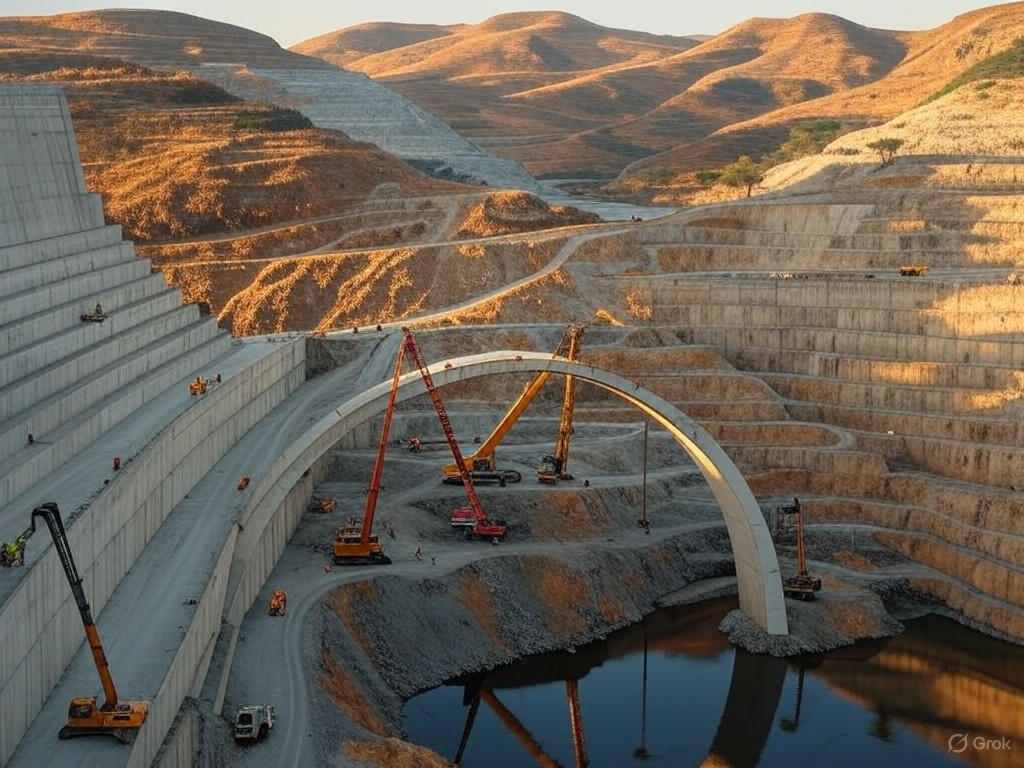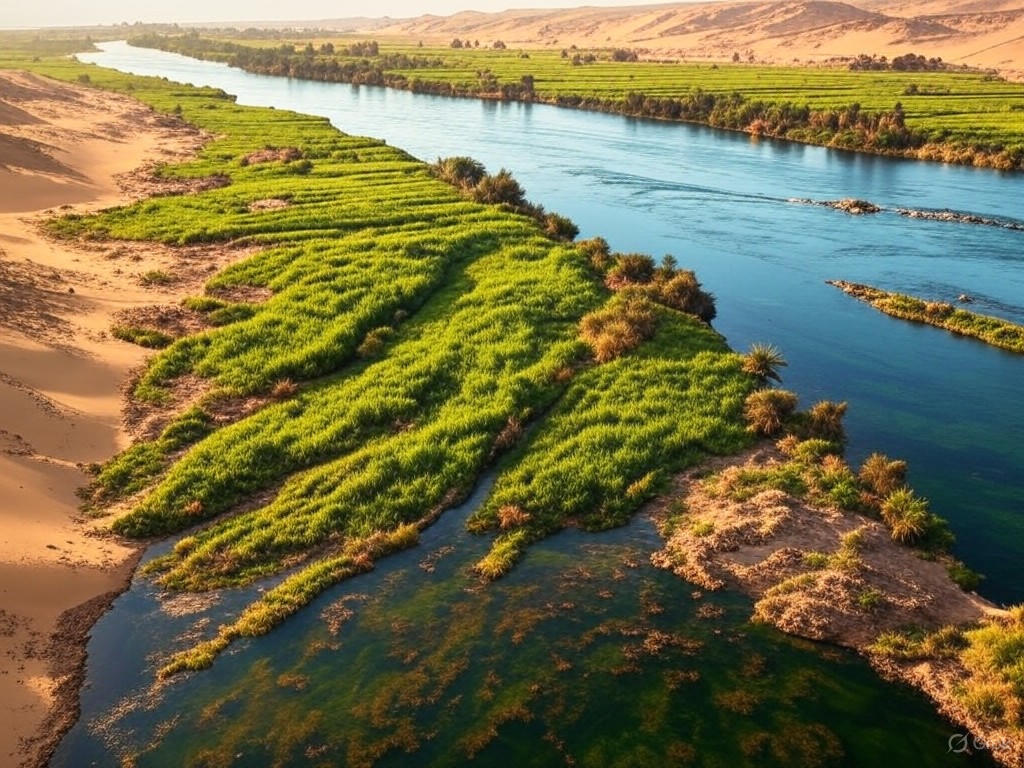Ethiopia’s Dam Dispute: Nile River Tensions Escalate
In the quiet cradle of Africa's ancient heart, where the Nile River has whispered secrets through millennia of human endeavor, we confront a modern enigma wrapped in stone and steel. Like a poet's verse etched upon the landscape, the Grand Ethiopian Renaissance Dam stands as a testament to ambition and resilience, yet it casts long shadows over the waters that sustain nations. As Emmeline Dickenson, I reflect upon this tableau not merely as a conflict of borders and resources, but as a profound meditation on sovereignty, stewardship, and the delicate interplay of progress and tradition. This editorial examines Ethiopia's bold pursuit of energy independence through the dam, its ripple effects across the Nile Basin, and the geopolitical undercurrents that demand measured, principled resolution—favoring free-market ingenuity and limited governmental overreach in a world too quick to entangle itself in endless mediation.
The Nile, that venerable artery of life, has long been more than a river; it is a bearer of history, a sustainer of civilizations from the highlands of Ethiopia to the fertile deltas of Egypt. Yet, in recent years, Ethiopia's construction of the Grand Ethiopian Renaissance Dam—intended as a beacon of self-reliance and economic vitality—has stirred the waters into a storm of regional discord. Begun in 2011, this colossal project on the Blue Nile represents Africa's largest hydroelectric endeavor, poised to generate over 6,000 megawatts of power. For Ethiopia, it embodies a rightful claim to its natural resources, channeling free-market principles to foster domestic growth without undue reliance on foreign aid. However, downstream nations like Egypt and Sudan view it as a potential threat to their water security, fearing reduced flows that could imperil agriculture, drinking supplies, and economic stability. This tension underscores a broader geopolitical reality: in a continent rich with untapped potential, the pursuit of national self-determination often clashes with shared dependencies.

An aerial view of the Grand Ethiopian Renaissance Dam, illustrating Ethiopia's engineering prowess and its drive toward energy sovereignty amid Africa's dynamic landscape.
The Analysis: Balancing Ambition and Heritage in the Nile Basin
At the core of this conflict lies a fundamental question of resource allocation and national rights, echoing the center-right ethos that prizes individual enterprise over collective imposition. Ethiopia, a nation long hampered by energy shortages and economic constraints, views the dam as a cornerstone of free-market development. By harnessing the Nile's flow, Ethiopia aims to power its growing economy, attract private investment, and reduce poverty through reliable electricity—much like how innovative infrastructure has propelled other emerging markets. This approach aligns with traditional values of self-reliance, where governments facilitate rather than dominate economic progress, allowing market forces to drive innovation without the heavy hand of international bureaucracy.
Yet, the dam's implications extend far beyond Ethiopia's borders, affecting the delicate equilibrium of the Nile River system. Egypt, heavily dependent on the river for 97% of its freshwater, perceives the structure as a direct challenge to its historical entitlements under the 1959 Nile Waters Agreement—a colonial-era pact that allocated the bulk of the river's flow to Cairo and Khartoum. Sudan's position is more nuanced; while it stands to benefit from regulated flooding and potential hydroelectric collaboration, it remains wary of any disruption that could undermine its own agricultural sectors. These dynamics highlight the geopolitical intricacies of Africa, where historical claims intersect with modern aspirations, often exacerbated by external actors seeking to mediate without fully understanding local contexts.
From a center-right lens, this scenario underscores the virtues of negotiated agreements rooted in mutual respect and market-oriented solutions, rather than reflexive appeals to global governance. For instance, bilateral trade deals could incentivize Ethiopia to manage water releases in ways that benefit all parties, perhaps through private sector partnerships that monetize excess energy exports. Such an approach honors traditional values of sovereignty while promoting economic interdependence, avoiding the pitfalls of over-regulation that stifle innovation.
Evidence of Strain: Data, Diplomacy, and Geopolitical Realities
The evidence surrounding the Grand Ethiopian Renaissance Dam paints a complex picture of progress amid peril, drawing from authoritative analyses that illuminate the stakes. According to a report by the International Crisis Group International Crisis Group on Nile Tensions, the dam could reduce Egypt's Nile flow by up to 25% during its filling phase, potentially straining food production in a region already vulnerable to climate variability. This data, gathered from hydrological models, underscores the real economic risks: Egypt's agriculture sector, a pillar of its economy, relies on consistent inflows, and any shortfall could exacerbate food insecurity without targeted market adaptations.
Ethiopia's perspective, however, is bolstered by projections of substantial benefits. The World Bank has noted that the dam could add billions to Ethiopia's GDP through energy exports, fostering a free-market ecosystem where private investors capitalize on Africa's renewable potential World Bank on African Energy Development. Similarly, analyses from the Wall Street Journal highlight how such projects exemplify the continent's shift toward self-funded infrastructure, reducing dependence on foreign loans and promoting fiscal responsibility Wall Street Journal on Ethiopia's Dam Ambitions. These sources collectively reveal a narrative of opportunity: if managed through transparent negotiations, the dam could catalyze regional trade, such as selling hydroelectric power to Sudan and Egypt, thereby turning potential conflict into economic synergy.
Geopolitically, the involvement of global players like the United States and the African Union adds layers of complexity. Recent mediation efforts, including trilateral talks in 2023, have stalled due to differing interpretations of international law, as detailed in a BBC News feature BBC News on Nile Basin Diplomacy. From a limited-government viewpoint, this overreliance on external forums risks entangling sovereign nations in protracted disputes, diverting attention from practical, market-driven solutions like joint ventures in water management technology.

A satellite image of the Nile River valley in Egypt, showcasing the river's vital role in sustaining agriculture and communities, juxtaposed against the challenges posed by upstream developments.
Conclusion: Toward a Harmonious Current
As we contemplate the Grand Ethiopian Renaissance Dam, let us pause in quiet reflection, much like the poet who gazes upon a river's unceasing flow. This conflict, woven into the fabric of Africa's geopolitical tapestry, calls for a path forward that honors tradition while embracing free-market wisdom. Ethiopia's endeavor is not merely a dam; it is a symbol of a nation's rightful pursuit of prosperity, yet it must be tempered by the responsibilities of shared stewardship. By prioritizing bilateral dialogues and innovative economic partnerships—over expansive governmental interventions—we can forge a future where the Nile nourishes rather than divides.
In this spirit, let us advocate for solutions that empower nations to chart their own courses, drawing on the resilience of Africa's people and the dynamism of open markets. The river, after all, does not bend to decrees; it flows through the choices we make. As stewards of this ancient legacy, our task is to ensure that progress and peace flow as one.

